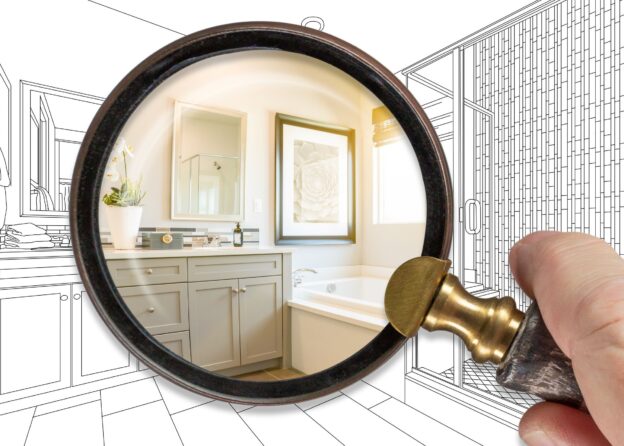Successfully pulling off a large-scale home improvement project requires careful planning. You may spend hours, weeks, and even months working on preliminary design and choosing finish materials. Just as important, if not the most critical part of a successful remodel, is hiring the right contractor to execute your plan.
Following are some considerations when planning a remodel and deciding who to hire. Taking time to go through these steps will greatly improve the chance of your project being completed to your satisfaction.
Design
The first step involves working with an architect or designer to create a conceptual design you can share with prospective contractors.
This first phase provides a rough idea of your overall project and allows you to explore estimated budget numbers and timeline. Expect to pay a fee for this service. However, it will be much less than the cost of a detailed set of building plans.
Some remodeling or design/build firms provide in-house design services. Others collaborate with business partners who specialize in design and architecture. If you don’t already have a contact for design, this can be a convenient alternative. In this case, you will typically pay an upfront fee as well. If you proceed with the same contracting firm for the construction portion, there will later be a construction proposal and contract.
Whichever direction you take, this first step is necessary to establish a budget and to begin seriously vetting contractors.
Interview Contractors
You could be working closely with a contractor in your home for many months. Selecting a professional who is experienced with your type of project and has an agreeable personality are both important considerations.
Take a few minutes initially on the phone with each prospective contractor to help determine who you want to consider for your project.
- Have they worked on similar projects as yours?
- Do they provide references?
- Will they share financial references from suppliers?
- What is their availability?
Narrow it down to a few contractors who satisfied your initial questions and schedule an appointment to meet in person.
In the meantime, check with the Washington State Department of Labor & Industries and Better Business Bureau for any disputes with clients or subcontractors. For video instructions on how to verify a contractor in Washington State, click here.
Review Budget Proposal
In your initial meeting, be prepared to share your design concept with prospective contractors. From this preliminary design, the contractor can provide a budget proposal and estimated time to complete the project. A budget proposal is usually provided with no monetary obligation. The exception may be when working with a design/build firm as there may be billable hours to create your initial plans.
If the project exceeds your budget or will take longer to complete than you can allow, now is the time to revise your plan.
If the budget proposal meets your expectations, you are ready to decide on a contractor.
Choose a Contractor
Review the list of questions from your initial phone interview and request references or other supporting documentation. Don’t rely on testimonials, speak with their references.
Ask if you can see a finished project or visit an active job site.
- Does the job site appear safe?
- Are subcontractors and employees professional and courteous?
- Are proper measures being taken to protect the homeowner’s property?
At this point, you should feel confident in your decision and ready to proceed toward a contractual agreement.
Complete Building Plans & Proposal
Once you decide on your contractor the next step is to finalize the building plans. Typically, you, your designer, and your contractor will collaborate to prepare a comprehensive set of building plans that include material selections and finishes. Depending on the complexity of the project, this process can take 50-200 professional hours to complete.
A detailed construction proposal is prepared from the final building plans. It should include a scope of work, materials needed/agreed upon, subcontractors to be used, estimated time to complete the project, price, permit fees, payment terms, warranties, and procedures for change orders.
Finalize a Contract
A typical contract includes the detailed proposal, proof of liability insurance, a security or performance bond, start date and projected completion date, and a requirement that the contractor obtain lien releases from all subcontractors and suppliers. For residential jobs over $1000, the contractor must provide the property owner a Disclosure Statement, outlining the customer’s rights and responsibilities and information regarding liens.
Work in Progress
Once the job is underway, take time to meet with your contractor regularly to ensure the work is progressing according to the contract and schedule. Check that proper permits have been obtained and required inspections are conducted.
Once the project is complete, do a final walk-through with the contractor. Make sure any items on the punch list are completed before making final payment. If you request lien release documents, avoid making final payment until you have received the lien release.
Our expertise is matching customers with the most appropriate service professional for their home improvement project. Let us know how we can help by completing our online Work Request.
- Future Lifestyle Improvements - March 21, 2025
- Home Energy Audit – What You Need to Know - January 16, 2025
- Prepare Your Home for Fall and Winter - November 14, 2024

